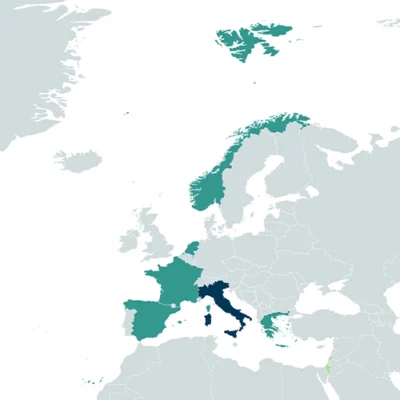Boosting the frequency and scale of marine Biodiversity monitoring using digital imagery and artificial intelligence
Call
Duration
01/04/2024 – 31/03/2027
Total grant
Approx. 1,7 mil. €
More information
Lisandro BENEDETTI-CECCHI
lbenedetti@biologia.unipi.it
Partners of the project
- Department of Biology, University of Pisa, Pisa, Italy
- Department of Coastal Systems, Royal Netherlands Institute for Sea Research (NIOZ), Den Burg, Netherlands
- Department of Biology, University of Naples Federico II, Naples, Italy
- Faculty of Biosciences and Aquaculture, Nord University, Bodo, Norway
- Department of Marine Sciences, University of the Aegean, Mytilene, Greece
- Marine Biodiversity Exploitation and Conservation, University of Montpellier, Montpellier, France
- AZTI Foundation, Department of Marine Research, Sukarrieta, Spain
- Self-financed partner: Marine Community Laboratory, Israel Oceanographic and Limnological Research (IOLR), Haifa, Israel

Context
Developing rapid, informative, and robust biodiversity assessments is crucial to evaluate progress in evidence-based conservation and management strategies of marine biodiversity. BioBoost+ is designed to improve non-invasive, cost- effective, and high-frequency sampling and identification of marine biota by applying state-of-the-art Artificial Intelligence (AI) technology with digital imagery. These include real-time monitoring via camera networks and citizen science groups. These methods will be applied to a wide range of taxa, from habitat-forming species (seagrass meadows, shellfish beds, and macroalgal canopies), indicator species of ecological and economic importance (e.g. coastal fish, lobsters, shorebirds), invasive species, and understudied groups (from microscopic, free-floating animals to rare fish). BioBoost+ enhances biodiversity monitoring within European regional seas from the Mediterranean, North and Norwegian Seas to support ongoing conservation interventions such as habitat restoration projects and Marine Protected Areas (MPAs).
Main objectives
BioBoost+ aims to:
- harness biodiversity imaging to enable end-to-end data streams and analysis, from image acquisition using in situ camera networks to automated updating of indicators to support planning, restoration, conservation, and management of marine biodiversity;
- scale-up digital data acquisition through engagement with citizen science programs and other stakeholders (industry, scientists, policy-makers), empowering a multidisciplinary approach to broaden the scales of biodiversity monitoring;
- automate analyses of seabed habitat data (e.g. seagrasses, shellfish beds, macroalgal forests) and foster the use of drone and satellite images to map human pressures and assess the success of habitat restoration and MPAs;
- use high-frequency time series and systematic analysis of habitat data to produce improved measures of biodiversity under present-day and future climate change scenarios, supporting adaptation and mitigation policies.
Main activities
BioBoost+ applies AI to identify and enumerate species from photographs and videos. AI will be tested in demonstration areas using in-water and aerial images applied to (a) satellite imagery to extract large-scale biodiversity drivers, such as oceanographic and habitat features and human pressure from maritime activities (fish farms, boat tracks, windfarms, marinas), and (b) video and still images of zooplankton, seabed fauna and fish to accelerate semi-automated enumeration of species abundance. These data will indicate biodiversity change. Interactions with relevant stakeholder groups are planned at all stages of the project to co-design automated observation networks of marine biodiversity. Activities build on already existing relationships with stakeholders which include regular meetings with policy makers, workshops, attendance to industry events and to scientific and policy conferences. Knowledge and technological achievements are disseminated through online resources and direct engagement, to facilitate their exploitation by end users, policy makers and the general public. For example, simple web interfaces (Shiny Apps) will allow end-users to interact directly with data and to visualise trends and changes in indicators. Improved biodiversity monitoring will allow to better understand large-scale phenomena, such as thresholds, regime shifts and species invasions in vulnerable ecosystems, improve the capacity to predict the impacts of multiple stressors, and develop better indicators of marine ecosystem health.


